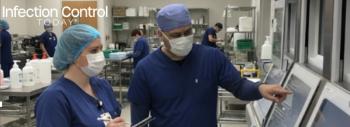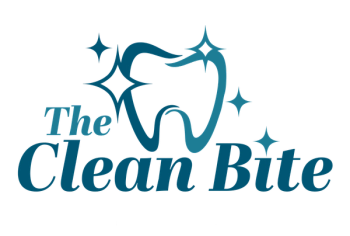
What Are the Infection Prevention Risks in the Hospital Tray Line?
"Hospital tray lines operate at high speed to feed hundreds of patients daily. Staff members plate food, cover trays, and load them onto mobile carts that navigate elevators, hallways, and patient rooms. Each of these steps introduces opportunities for contamination."
Hospital meal trays are often overlooked in discussions of infection prevention. Yet each tray, from assembly to delivery, passes through multiple hands, surfaces, and transport carts, transforming a routine process into a potential vector for harmful pathogens. While most attention in hospitals is focused on medical equipment and patient care areas, the tray line, a seemingly simple part of the foodservice operation, represents a critical yet underappreciated pathway for infection transmission.
Hospital tray lines operate at high speed to feed hundreds of patients daily. Staff members plate food, cover trays, and load them onto mobile carts that navigate elevators, hallways, and patient rooms. Each of these steps introduces opportunities for contamination. Tray components, including lids, handles, utensils, and the carts themselves, can harbor microbes similar to those found on medical equipment, which studies indicate can persist even after standard cleaning procedures.1,2,3 This highlights the need to treat tray lines not simply as a food delivery mechanism but as a potential high-risk interface in the hospital environment.
ServSafe and Hospital Infection Control
Many hospitals rely on ServSafe certification to train foodservice staff in safe food handling, proper cooking temperatures, and the prevention of foodborne illnesses such as Salmonella and Listeria.4 ServSafe provides essential guidance for preventing traditional foodborne outbreaks, but it does not fully address health care-associated pathogens (HAPs), including methicillin-resistant Staphylococcus aureus (MRSA), vancomycin-resistant Enterococci (VRE), and Clostridioides difficile (C difficile). These pathogens can survive on high-touch surfaces, such as tray carts, lids, and utensils, posing an elevated risk to patients with weakened immune systems.2,3
Integrating infection prevention principles beyond traditional food safety is crucial. Staff who understand environmental hygiene and proper handling techniques can dramatically reduce the potential for pathogen transfer along the tray line. Ensuring that foodservice training addresses both foodborne and HAPs strengthens the hospital’s overall infection control strategy.
Evidence from Hospital Studies
Recent research underscores the risks associated with hospital foodservice operations. A 2025 study in Saudi Arabia documented significant microbial contamination throughout the hospital foodservice chain, affecting both raw ingredients and prepared meals.1 Other studies examining hospital environmental surfaces have consistently shown persistent microbial presence despite standard cleaning protocols.2,3 While these studies did not focus specifically on tray lines, they emphasize that mobile, high-touch surfaces remain potential reservoirs for infection. The cumulative effect of these surfaces, staff interactions, and patient contact points can significantly contribute to the overall risk of health care-associated infections.
Strategies for Safer Tray Lines
Hospitals can enhance food safety and reduce infection risks in tray lines through several targeted interventions:
- Enhanced cleaning and disinfection of tray carts, lids, and utensils to eliminate residual pathogens2,3
- Hand hygiene checkpoints for staff handling trays, reinforcing proper techniques, and ensuring adherence
- Dedicated transport routes that separate foodservice operations from clinical areas to minimize cross-contamination
- Integration of infection prevention training into ServSafe or internal hospital certifications to address health care-specific pathogens4
- Minimizing cross-touch points through tray line design and workflow adjustments, such as automated or touchless systems
Even small operational changes, such as reorganizing tray line flow, staggering staff shifts, or implementing routine disinfection checks, can significantly reduce infection risk.
Hospital tray lines are more than a logistical challenge; they are a frontline in infection prevention. While ServSafe establishes essential food safety standards,4 hospitals must supplement these with rigorous environmental hygiene, thoughtful workflow design, and ongoing staff education. By proactively addressing the unique risks associated with tray lines, health care facilities can better protect patients, limit the spread of pathogens, and strengthen the hospital’s overall safety culture. Recognizing and mitigating the infection risks inherent in meal delivery is an important step toward a safer hospital environment for both patients and staff.
References
- Alzahrani A, Al-Dawish M, Al-Mutairi A, et al. Comprehensive risk assessment and control measures in the food service chain of hospitals nutrition department: a case study in Al-Ahsa Governorate, Kingdom of Saudi Arabia. Front Microbiol. 2025;15:1551446. doi:10.3389/fmicb.2025.1551446
- El-Sherbiny N, Khalil S, Hussein M, et al. The impact of enhanced cleaning on bacterial contamination of hospital environmental surfaces: a clinical trial in critical care unit in an Egyptian hospital. Antimicrob Resist Infect Control. 2024;13(22). doi:10.1186/s13756-024-01489-z
- Zhao Y, Liu W, Zhang X, et al. Assessment of disinfection efficacy on bacterial contamination of hospital surfaces—China, 2007–2022. China CDC Wkly. 2025;7(25):455-460. doi:10.46234/ccdcw2025.135
- National Restaurant Association. ServSafe Manager Book. 8th ed. Chicago, IL: National Restaurant Association; 2023.
Newsletter
Stay prepared and protected with Infection Control Today's newsletter, delivering essential updates, best practices, and expert insights for infection preventionists.





